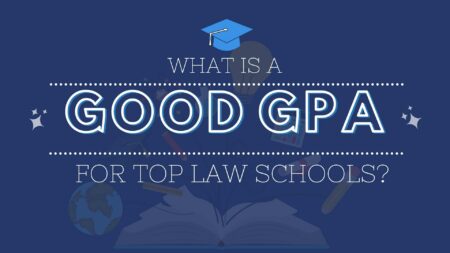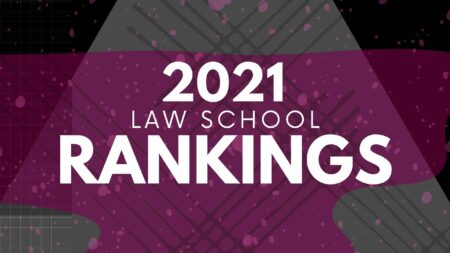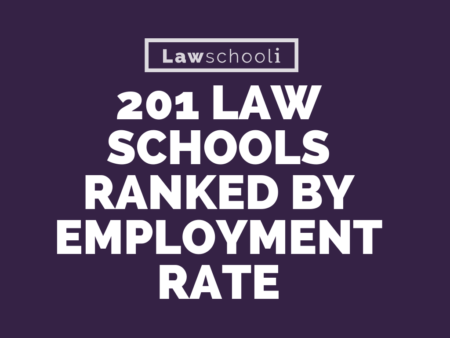In this post, we are going to take a look at dropout rates for law schools. Dropouts are significant because generally, they mean one or both of a couple things: either the student feels him or herself unequal to the challenge presented by the law school environment, or the prospect of mounting debt and a poor employment outlook compel the student to bail out. In either case, dropouts are left having paid a significant sum for no tangible benefit.
Needless to say, in an ideal system there would be few to no dropouts. That isn’t the system we have. Although one part of the law school system, schools with high median LSAT scores, is functioning well, with minimal attrition, the rear of the pack is not.
As law schools generally lowered admissions standards in the decade since the recession, dropout rates increased. Stephanie Ward of the ABA gives us a good breakdown of figures from recent years:
At law schools with median LSAT scores between 155 to 159, the average academic attrition rate for the 2014-2015 school year was 2.0 percent. For the 2015-2016 school year, it was 1.8 percent.
For law schools with median LSAT scores between 150 to 154, academic attrition for the 2014-2015 school year averaged out to 4.7 percent, and 4.6 percent for the 2015-2016 school year.
At law schools with median LSAT scores below 150 but above 145, academic attrition went from 12.7 percent for the 2014-2015 school year to 14.3 percent for the 2015-2016 school year.
And among law schools where the median LSAT score was 145 or lower, the average academic attrition rate for the 2015-2016 school year was 25.3 percent.
“Is sweet spot for avoiding academic attrition at law schools a median LSAT of at least 150?” ABA Journal, January 16, 2018
Although attrition is apparently stabilizing, these numbers should be of great concern to anyone thinking about attending a lower ranked school. An LSAT below 150 may be a good indicator that someone is not sufficiently likely to benefit from attending law school, as there is a high chance of getting nothing for the effort.
Taking a look at the data below, attrition is minimal through about the top 100 schools, then increases precipitously. Compare this list to our list of LSAT and GPA medians for ABA-approved schools, and you’ll see an incredibly strong correlation between lower medians and higher dropout rates.
Though the ABA has failed to take significant action so far, there has been extensive discussion of schools with unacceptably high dropout rates losing accreditation.
| Law School | 1L Dropout Rate % |
|---|---|
| Arizona Summit | 65.31% |
| Florida Coastal School of Law | 38.68% |
| North Carolina Central | 28.92% |
| Thomas Jefferson School of Law | 26.51% |
| University of San Francisco | 23.78% |
| Capital University Law School | 23.27% |
| Widener University | 21.09% |
| Liberty University School of Law | 20.55% |
| Atlanta’s John Marshall Law School | 19.44% |
| Elon University School of Law | 18.84% |
| St. Thomas (Florida) | 17.84% |
| Florida A&M University Law | 17.57% |
| California Western School of Law | 17.49% |
| Ohio Northern University (Pettit) | 17.31% |
| Southwestern Law School | 17.27% |
| University of Dayton | 17.20% |
| Faulkner University | 16.90% |
| Nova Southeastern Law | 16.37% |
| University of Massachusetts–Dartmouth | 16.25% |
| Florida International University | 16.11% |
| University of Memphis (Humphreys) | 15.89% |
| Western State College of Law | 15.85% |
| Ave Maria School of Law | 15.46% |
| Howard University | 15.17% |
| Golden Gate University School of Law | 15.05% |
| Touro College Law Center | 14.69% |
| UNT Dallas | 14.42% |
| St. Mary’s University | 14.09% |
| Western Michigan University (Cooley) | 13.97% |
| South Texas College of Law | 13.85% |
| Appalachian School of Law | 13.70% |
| New York Law School | 13.26% |
| University of the Pacific (McGeorge) | 13.16% |
| Texas Tech University | 12.95% |
| Regent University School of Law | 12.90% |
| University of Arkansas—Little Rock | 12.86% |
| Northern Kentucky University | 12.84% |
| New England Law— Boston | 12.43% |
| University of the District of Columbia | 11.83% |
| Campbell University | 11.80% |
| Suffolk University | 11.76% |
| Syracuse University | 11.17% |
| Georgia State University | 11.05% |
| University of Missouri | 10.87% |
| Duquesne University | 10.81% |
| Mercer University (George) | 10.66% |
| Texas Southern University Law | 10.55% |
| University of South Dakota | 10.53% |
| Southern University Law Center | 10.50% |
| Concordia University School of Law | 10.42% |
| Barry University | 10.29% |
| Northern Illinois University | 10.20% |
| Widener University Delaware | 10.19% |
| University of Idaho | 9.91% |
| Belmont University College of Law | 9.82% |
| Oklahoma City University | 9.82% |
| University of Toledo | 9.78% |
| Texas A&M University | 9.42% |
| Inter American University Law | 9.28% |
| Seattle University | 9.14% |
| University of Akron | 8.81% |
| Southern Illinois University Carbondale | 8.77% |
| Washburn University | 8.77% |
| Charleston School of Law | 8.76% |
| CUNY | 8.60% |
| University of Arkansas—Fayetteville | 8.40% |
| Mississippi College School of Law | 8.40% |
| Cleveland State University | 8.33% |
| University of San Diego | 8.33% |
| Pepperdine University | 8.28% |
| Case Western Reserve University | 8.21% |
| Seton Hall University | 8.12% |
| University of New Hampshire | 8.11% |
| Lincoln Memorial University | 8.00% |
| University of La Verne Law | 7.95% |
| University of Denver (Sturm) | 7.66% |
| Gonzaga University | 7.56% |
| University of Baltimore | 7.54% |
| Western New England University | 7.53% |
| Roger Williams University Law | 7.45% |
| Pace University | 6.85% |
| Santa Clara University | 6.82% |
| Hofstra University (Deane) | 6.80% |
| Albany Law School | 6.67% |
| Creighton University | 6.54% |
| University of Detroit Mercy | 6.54% |
| University of Kansas | 6.54% |
| Brooklyn Law School | 6.50% |
| Michigan State University | 6.39% |
| Chapman University (Fowler) | 5.99% |
| John Marshall Law School | 5.98% |
| Drexel University | 5.96% |
| Pennsylvania State University | 5.88% |
| Catholic University of America | 5.83% |
| Drake University | 5.83% |
| Illinois Institute of Technology (Chicago) | 5.68% |
| Quinnipiac University | 5.60% |
| LSU — Baton Rouge (Hebert) | 5.59% |
| Loyola Marymount University | 5.21% |
| Mitchell Hamline | 5.10% |
| University of Oregon | 4.86% |
| Marquette University | 4.84% |
| St. Louis University | 4.76% |
| Samford University (Cumberland) | 4.73% |
| University of South Carolina | 4.65% |
| Arizona State University (O’Connor) | 4.63% |
| University of Nebraska—Lincoln | 4.55% |
| Willamette University (Collins) | 4.55% |
| Loyola University New Orleans | 4.52% |
| University of Puerto Rico | 4.42% |
| University of Tulsa | 4.26% |
| University of Alabama | 4.03% |
| Pontifical Catholic (Puerto Rico) | 4.00% |
| University of California (Hastings) | 3.99% |
| George Mason University | 3.98% |
| Loyola University Chicago | 3.88% |
| Vermont Law School | 3.73% |
| Valparaiso University Law School | 3.57% |
| University of Mississippi | 3.54% |
| University of Maine | 3.53% |
| Stetson University | 3.37% |
| Southern Methodist University | 3.37% |
| University of Illinois Law | 3.27% |
| Yeshiva University (Cardozo) | 3.26% |
| Ohio State University (Moritz) | 3.26% |
| DePaul University | 3.21% |
| Baylor University | 2.99% |
| Brigham Young University (Clark) | 2.97% |
| University of Nevada—Las Vegas | 2.86% |
| University of Louisville (Brandeis) | 2.84% |
| SUNY Buffalo Law School | 2.78% |
| Temple University (Beasley) | 2.69% |
| Washington University at St. Louis | 2.67% |
| University of Kentucky | 2.65% |
| University of California—Davis | 2.65% |
| University of Georgia | 2.65% |
| University of Oklahoma | 2.52% |
| University of Tennessee—Knoxville | 2.44% |
| Washington and Lee University | 2.44% |
| University of California—Los Angeles | 2.38% |
| University of North Carolina | 2.35% |
| Villanova University | 2.29% |
| George Washington University | 2.21% |
| University of Utah (Quinney) | 2.20% |
| University of Hawaii | 2.13% |
| University of Pittsburgh | 2.13% |
| Emory University | 2.10% |
| University of Cincinnati | 2.08% |
| Indiana University—Indianapolis | 2.08% |
| University of Virginia | 1.88% |
| University of Miami | 1.86% |
| Indiana University—Bloomington | 1.85% |
| West Virginia University | 1.83% |
| University of Richmond | 1.74% |
| Rutgers—Newark | 1.73% |
| Florida State University | 1.68% |
| University of Missouri | 1.64% |
| University of Southern California | 1.60% |
| University of Minnesota | 1.53% |
| University of Iowa | 1.53% |
| Tulane University | 1.44% |
| Harvard University | 1.43% |
| University of Wyoming | 1.39% |
| Georgetown University | 1.37% |
| Penn State Dickinson | 1.37% |
| University of St. Thomas | 1.37% |
| Wayne State University | 1.36% |
| University of Florida | 1.33% |
| University of Wisconsin | 1.32% |
| University of California—Berkeley | 1.32% |
| University of California — Irvine | 1.26% |
| University of Arizona | 1.25% |
| University of Michigan | 1.25% |
| Fordham University | 1.22% |
| St. John’s University | 1.20% |
| Stanford University | 1.11% |
| University of Colorado | 1.05% |
| University of Notre Dame | 1.01% |
| University of Maryland | 0.97% |
| New York University | 0.94% |
| University of Pennsylvania | 0.82% |
| Boston College | 0.79% |
| American University (D.C.) | 0.72% |
| University of Connecticut | 0.69% |
| University of Texas—Austin | 0.65% |
| Wake Forest University | 0.64% |
| University of Washington | 0.60% |
| Lewis & Clark Law | 0.59% |
| William and Mary | 0.54% |
| University of Houston | 0.44% |
| Boston University | 0.42% |
| Columbia University | 0.26% |
| University of Chicago | 0.00% |
| Cornell University | 0.00% |
| Duke University | 0.00% |
| University of Montana | 0.00% |
| University of New Mexico | 0.00% |
| University of North Dakota | 0.00% |
| Northeastern University | 0.00% |
| Northwestern University | 0.00% |
| Vanderbilt University | 0.00% |
| Yale University | 0.00% |




3 Comments
5-23-2021
This is a very informative article which prospective law students should look into when they are considering which ABA-approved law schools to apply to. It would be interesting to see which law schools have structured academic support programs in their schools for students, particularly 1ls, and if so, what is the correlation with attrition rates. Also, is there any distinction made between part-time (evening) and full-time (day) students? Finally, is there any more recent data for 2020?
Keep up the good work!
Professor Stephen R. Rolandi, MPA
Larchmont, New York
Do these numbers include transfers? Mayb explains
Bunch of these schools in the teen percentage if it does.
The question is what the ABA should do – if anything. Remember that the ABA is known to put all sorts of burdens on law schools that simply drive up the costs. When you threaten a school with probation because their law school building is not new enough or because they use too many adjunct professors even though their bar pass rates are higher than other schools in the same area, you are probably not focusing as much attention as the quality of teaching as you should be. (My experience was that adjuncts actually knew the law – particularly in specialized areas – and were often better teachers) Thomas Sowell has actually done a pretty stinging critique of the ABA’s accreditation process and provides plenty of evidence that it is more anticompetitive than ensuring quality education.
Perhaps requiring law schools to post their attrition rates should be required. I, for one, am reluctant to prevent schools from offering those who did not do as well on the LSAT a chance to fulfill their dream, as long as the risks are transparent. Require them to disclose attrition rate, (real) legal employment rates following graduation and then let the customer decide. Most attorneys who have practiced any length of time will know lawyers who succeeded despite going to lower end law schools. I have two neighbors who are both very successful attorneys. Both went to law schools with attrition rates above 15%. We have many Ivy league attorneys in our community who make considerably less than these two.
Full disclosure – yes. Meddling by the ABA – No.